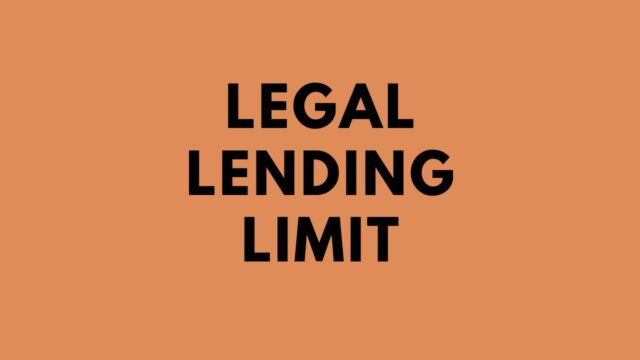
A legal lending limit (LLL) is the maximum amount of money that a person or business can borrow from a financial institution without needing special permission from the government.
This limit exists to protect both borrowers and lenders from taking on too much risk and to ensure that lenders stay within their own risk management parameters. In this blog post, we will take a closer look at what a legal lending limit is and how it affects both borrowers and lenders.
What Does the Legal Lending Limit Protect?
The legal lending limit protects both borrowers and lenders by limiting the amount of money that can be borrowed in any given transaction. This helps to ensure that people do not overextend themselves financially or become overwhelmed with debt, while also protecting lenders from potential losses due to defaults on loans. Additionally, it provides banks with an incentive to lend responsibly by creating a safeguard against irresponsible lending practices.
How Is It Determined?
The legal lending limit is usually determined by the government agency responsible for regulating financial institutions in each country or region.
In some countries, such as the United States, this agency is the Federal Reserve System, while in other countries it may be another organization such as the Financial Services Authority (FSA) in the UK. The specific limits vary depending on geographic location and type of loan being sought, but generally speaking they are set at relatively low levels so as not to encourage excessive borrowing.
What Are Its Benefits?
Having a legal lending limit helps protect both borrowers and lenders by limiting risk associated with large loans. It also ensures that banks are more likely to lend responsibly since they know that they won’t be able to lend beyond certain amounts without special permission from regulators.
Finally, it helps promote transparency between financial institutions and consumers since everyone knows exactly how much can legally be borrowed in any given transaction.
Conclusion:
Legal lending limits are an important tool for protecting both borrowers and lenders from excessive risk associated with large loans.
They help ensure that banks remain responsible when making decisions about who should receive credit, while also providing consumers with peace of mind knowing that they won’t be allowed to take on more debt than they can handle without special approval from regulators first.
If you’re considering taking out a loan, understanding your local laws regarding legal lending limits can help you make sure you don’t overextend yourself financially in order to pay back what you owe over time.


































